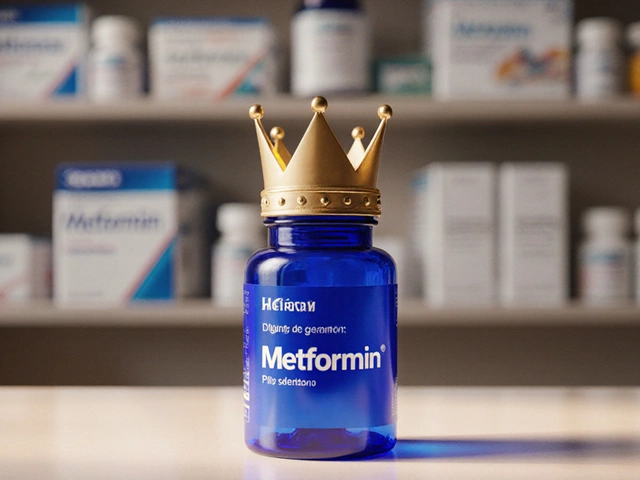So, you've just had knee replacement surgery. Now you're wondering if you should push your knee to bend, or just give it a rest. It's a common question, and the answer isn't straightforward. Right after surgery, your body is in healing mode. It's natural to want to get back on your feet, but should you force your knee to bend? Let's dive in.
First things first, bending your knee is crucial, but it doesn't have to happen overnight. Your new knee needs time to settle in, and forcing movement too soon can lead to more harm than good. Most folks don't know this, but your knee is a delicate balance of muscles, tendons, and ligaments, all recovering and learning how to work together with that new hardware.
- Understanding Knee Replacement Recovery
- The Importance of Knee Flexibility
- When to Push and When to Rest
- Common Misconceptions
- Helpful Exercises to Try
- Listening to Your Body
Understanding Knee Replacement Recovery
Getting a knee replacement is no small feat—it's like rebooting a part of your body to help you move better. But what happens post-surgery? Knowing what to expect can ease some anxiety.
Right after your knee replacement, your body jumps into action mode, focusing all its energy on healing. Your knee needs time to chill out and get used to the new setup. Swelling is normal as your body's way of dealing with the changes. Most people don't realize this, but immediate vigorous movement can actually slow down recovery.
For the first couple of weeks, your doctor will likely recommend a mix of rest and gentle exercises to start. Physical therapy plays a big role here. These are not the usual gym sessions but specifically designed exercises to help regain strength and improve mobility without stressing the joint. Pretty neat, right?
Wanna know something interesting? According to a study from 2024, about 90% of people who had knee replacements reported significant improvements in their quality of life after recovery. That's massive!
Recovery can vary from person to person, but most folks start feeling a lot better around the three-month mark. Patience is key here—no rushing. Remember, you're not competing with anyone, so listen to your body. If something feels off, talk to your doctor or physical therapist.
So there you have it, recovery is a journey, not a race. Taking things at a comfortable pace can make all the difference in bouncing back strong.
The Importance of Knee Flexibility
Getting your knee back to being flexibly is a biggie after a knee replacement. It's not just about being able to walk without looking like a robot. It's about doing the things you love—whether it's gardening, playing with your grandkids, or just getting up from the sofa without wincing. Knee flexibility often means a better quality of life post-surgery.
Now, let's break it down. A typical knee bend (or flexion) should reach around 135 degrees. That’s when you can squat or kneel without discomfort. Right after surgery, a milestone to aim for is getting your knee to bend at least 90 degrees within the first six weeks. It's not a race, but hitting small goals can make everyday activities a lot easier.
Working on knee flexibility means you’re stretching and strengthening not just the knee joint but also the muscles around it. These muscles help support your body weight and keep you stable. By regularly flexing your knee, you're telling your muscles and tendons to get stronger. Plus, moving your knee helps keep scar tissue at bay, which can be a real pain—literally.
Fun fact: Studies show that patients who focus on regaining their range of motion early on often recover faster and have less pain six months down the line. Imagine six months from now, you could be walking without even thinking about it. But remember, flexibility isn't all about hard work and sweat. It’s a balance between pushing yourself and knowing when to ease up. Your body will thank you for it in the long run.
When to Push and When to Rest
Finding the balance between activity and rest is key to a successful recovery from a knee replacement. It might be tempting to push yourself, especially if you're eager to get back to your usual routine, but patience is crucial.
The first few weeks post-surgery are all about laying the groundwork for long-term success. Initially, your doctor or physical therapist will likely encourage gentle motion exercises. This doesn't mean pushing yourself to the point of pain. If bending your knee brings discomfort beyond mild soreness, it's probably a sign to ease off.
So, when should you push? Generally, you will gradually start increasing your activity level by following structured guidelines provided by your healthcare team. At around six weeks, you'll typically notice improvements in swelling and flexibility. This is when you can start challenging your knee a bit more, always guided by professional advice.
Rest remains equally important. Make sure you're allowing ample time for your knee to recover between activity sessions. Proper rest helps reduce swelling and promotes healing, allowing those knee bending exercises to be more effective.
- Listen to your body: Pain is a signal, not an obstacle.
- Stick to recommended exercises: Consistency leads to progress.
- Use ice therapy to manage swelling after exercises.
- Check in with your doctor or therapist to avoid pushing too hard or too little.

Common Misconceptions
When it comes to knee replacement recovery, there's no shortage of myths floating around. Some of these can steer you in the wrong direction, so let's clear up a few misunderstandings.
First off, some folks think that pushing yourself to bend your knee as soon as possible is the way to go. While gaining knee flexibility is crucial, overdoing it too quickly can lead to setbacks instead of progress. Balance is key—listen to your therapist and your body.
Another myth is that rest is all you need. Sure, rest is part of recovery, but inactivity can be equally detrimental. Your knee needs gentle movement and exercises to avoid stiffness and promote healing.
People also believe pain is a no-brainer part of the process and should be ignored. Wrong! While some discomfort is normal, intense pain isn't. If something feels off, don't hesitate to get it checked out. It's your body's way of telling you to take it slow or seek adjustment in your recovery plan.
Finally, a common misconception is that if you're old, recovery will be slower and best results aren't guaranteed. Though age can be a factor, many older adults achieve fantastic outcomes with patience, proper guidance, and a strong commitment to their rehabilitation.
By sorting fact from fiction, you'll have a better shot at a smoother recovery experience. Keep these misconceptions in mind so you can dodge unnecessary setbacks and stay on track.
Helpful Exercises to Try
Got your knee replacement surgery behind you? Great! Now it's time to focus on getting that knee moving without going overboard. Here are some knee rehabilitation exercises to help you gain flexibility and strength again.
Don't worry; these exercises are beginner-friendly and designed to be safe. Plus, they can be done at home.
- Ankle Pumps: Start with something simple like ankle pumps. While lying on your back, just move your feet up and down like you're tapping your toes. This helps with blood circulation and is a nice warm-up for your knee.
- Quadriceps Sets: This one's about tightening the muscles above your knee. Lie on your back, keep your leg straight, and try to press the back of your knee into the bed. Hold for 5 seconds and relax. Do 10 reps.
- Heel Slides: Sit up or lie on your back and bend your knee by sliding your heel toward your butt. Hold it for a few seconds, then slide it back. Repeat 10-15 times. It's gentle, but it works wonders.
- Straight Leg Raises: While lying down, tighten your thigh muscle and raise your leg about 6 inches off the ground. Keep your knee straight throughout. Hold for a bit if you can, and then lower it slowly. Aim for around 10-15 lifts.
These exercises may seem basic, but they play a huge role in restoring your knee bending capability. Just be patient with the process, and trust it.
For an inside scoop, check out this quick stat table showing how frequently patients find success with these exercises within the first months post-surgery:
| Exercise | Success Rate (%) in First 3 Months |
|---|---|
| Ankle Pumps | 80% |
| Quadriceps Sets | 75% |
| Heel Slides | 85% |
| Straight Leg Raises | 78% |
Remember, consistency is key. Listen to your body, and if something doesn't feel right, it's okay to take a break or adjust. You've got this!
Listening to Your Body
After knee replacement surgery, it might feel like you're in a battle between your mind wanting quick recovery and your body calling for patience. Trust me, paying attention to what your body is telling you is key.
One important fact is that pain is not always a sign to push harder. It's your body’s way of saying, "Hey, something's not right here!" While some discomfort is part of the healing process, severe pain is a big red flag. If you experience this, it might be smart to ease off and consult your physiotherapist or doctor.
Another aspect of listening to your body involves energy levels. Let’s face it, post-surgery recovery can be exhausting. Rather than pushing through the fatigue, take breaks. Your body is already hard at work repairing tissues and adjusting to that new knee. Respect that journey.
Tracking your progress can be super helpful too. Keep note of your pain levels, swelling, and flexibility changes. This might help you spot patterns, like specific exercises improving your range or movements that cause setbacks.
Get this — everyone’s recovery path is unique. While one person's knee might flex beautifully within weeks, another might take months. The trick is not to compare your progress to others. Which, let's be honest, is easier said than done!
Lastly, don't underestimate the power of sleep. Quality sleep aids healing, so make sure you're catching those Z's. This simple tip can make a big difference in how your body feels day-to-day.
| Time Post-Surgery | Common Range of Knee Flexion |
|---|---|
| 1 Week | 0-70 degrees |
| 2-4 Weeks | 70-90 degrees |
| 6 Weeks | 90-110 degrees |
| 3 Months | 120+ degrees |
Aiming for those knee flexion goals is fine, just remember to listen along the way. If you’re unsure or nervous, having a chat with your healthcare professional can clear up a lot of doubts and make the whole process feel a lot less daunting.

 Can Ashwagandha Cause Weight Gain? What You Really Need to Know
Can Ashwagandha Cause Weight Gain? What You Really Need to Know
 How Do IVF Babies Look? Real Facts vs. Myths
How Do IVF Babies Look? Real Facts vs. Myths
 Understanding Chemotherapy's Impact on Long-Term Recovery
Understanding Chemotherapy's Impact on Long-Term Recovery
 Top Diabetes Medication: Why Metformin Leads the Pack
Top Diabetes Medication: Why Metformin Leads the Pack
 Understanding the Difference Between Holistic and Homeopathic Medicine
Understanding the Difference Between Holistic and Homeopathic Medicine